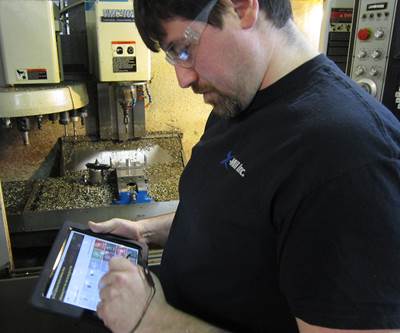Comparing ERP: Is the Cloud Right for You?
Make an informed decision by knowing the differences between onsite and cloud-based ERP systems.
Share




While accounting applications and hard-copy documentation used to be the backbone of every shop, the benefits of enterprise resource planning (ERP) software has become apparent to most shop owners. As ERP solutions become more common, the question for many shop owners is not whether to get an ERP solution, but what kind to get. According to Shoptech, maker of E2 and E2 Shop, the advent of cloud technology focuses the discussion on that issue, forcing shop owners to weigh the benefits and drawbacks of both onsite and cloud-based ERP.
Buying onsite software means facing a larger upfront cost but requires less intensive internet access. Onsite systems demand access to secure servers that the shop owns and maintains. These servers store all relevant data, backing it up regularly. However, the cost of these servers can be daunting, and users will need a skilled IT department to maintain and upgrade the system when necessary. Providers may service the software, but the cost of the servers will still fall on the buyer. That said, locations without high-speed-internet connectivity can still benefit from ERP software through these onsite installations.
Rather than installing the servers in house, cloud-based ERP handles the data management online through a browser- or app-based interface. This approach contrasts with its onsite counterpart by enabling the shop owner to take a hands-off approach to managing the system. Downloads and updates are no longer necessary, as the software is accessed through a web browser, meaning no servers, no IT costs and no need to manage the system itself. The provider handles the logistical maintenance of the platform, freeing users to spend time on their projects.
Additionally, cloud-based ERP offers flexibility to shop owners by enabling mobile access to the company’s data. As the system is cloud-based, any data input through one device updates on all devices automatically. If the shop keeps tablets or mobile devices on the shop floor, every worker will be aware of any updates to CAD files and schedules immediately. With Shoptech, each user has a password that grants access to allowed areas of the shop’s ERP system. Further benefits lie in the mobility, as internet-connected mobile device with security clearance can access ERP data, enabling shop management to schedule jobs, quote customers and place orders from anywhere with internet access.
Security is often a concern for data-management systems, and ERP is no different. While many manufacturers might balk at the idea of trusting secure data to an online server, companies like Shoptech invest tremendous resources into making their customers’ data secure. Shoptech, for example, employs Rackspace, an independent IT security firm that dedicates its resources to data maintenance and security. For comparison, onsite servers demand that shop owners invest in their own security. A shop owner who skimps on IT protections eventually will run into trouble, but someone who invests in reasonable security measures will see their data safe.
Ultimately, cloud-based ERP has numerous advantages that onsite systems simply cannot compete with, as the connectivity and hands-off maintenance are significant improvements to the user experience. However, with high-speed-internet access in limited availability throughout many parts of the United States, onsite ERP will continue to be important to many machine shops. Just remember to protect your servers with skilled IT professionals.
Related Content
Tips for Designing CNC Programs That Help Operators
The way a G-code program is formatted directly affects the productivity of the CNC people who use them. Design CNC programs that make CNC setup people and operators’ jobs easier.
Read MoreCutting Part Programming Times Through AI
CAM Assist cuts repetition from part programming — early users say it cuts tribal knowledge and could be a useful tool for training new programmers.
Read MoreHow this Job Shop Grew Capacity Without Expanding Footprint
This shop relies on digital solutions to grow their manufacturing business. With this approach, W.A. Pfeiffer has achieved seamless end-to-end connectivity, shorter lead times and increased throughput.
Read More4 Commonly Misapplied CNC Features
Misapplication of these important CNC features will result in wasted time, wasted or duplicated effort and/or wasted material.
Read MoreRead Next
Cloud-Based ERP Consolidates Quoting, Enables Mobile Management
E2 Shop cloud-based enterprise resource planning software from Shoptech improved the quoting process at an Ohio machine shop and enabled off-site management.
Read MoreBuilding Out a Foundation for Student Machinists
Autodesk and Haas have teamed up to produce an introductory course for students that covers the basics of CAD, CAM and CNC while providing them with a portfolio part.
Read MoreSetting Up the Building Blocks for a Digital Factory
Woodward Inc. spent over a year developing an API to connect machines to its digital factory. Caron Engineering’s MiConnect has cut most of this process while also granting the shop greater access to machine information.
Read More























.jpg;maxWidth=300;quality=90)







